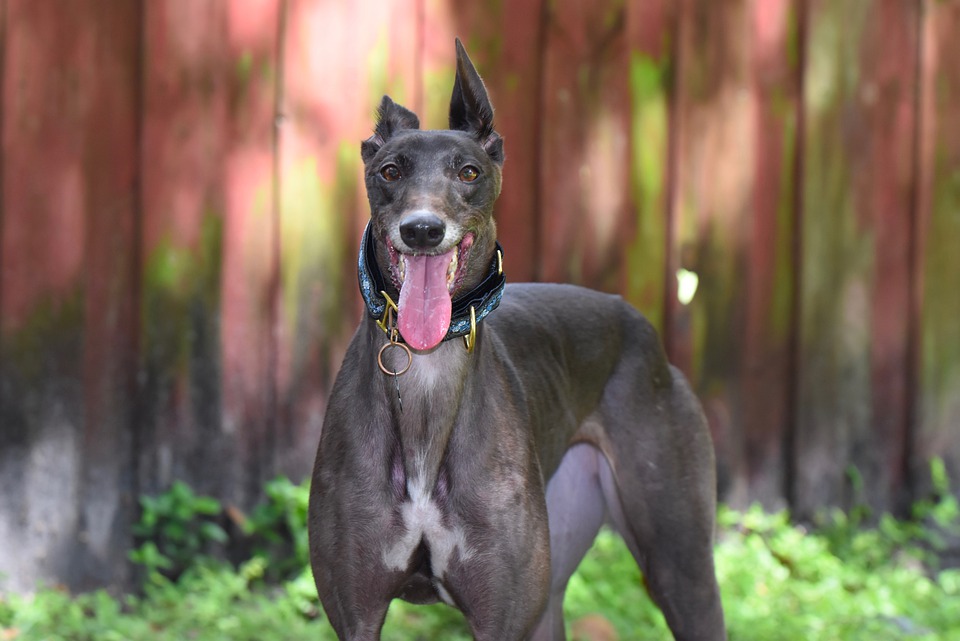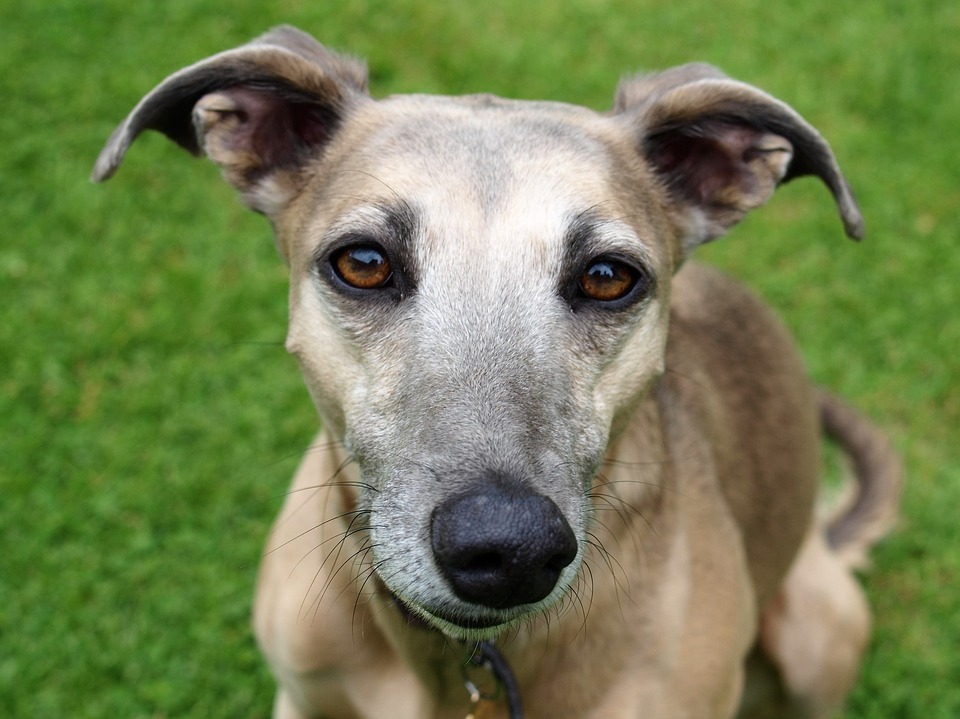The Greyhound
Vital Stats of Greyhounds
Vital stats of this breed include the following:
- Dog breed group: Hound
- Height: Not specified in breed standard
- Weight: 50 to 70 pounds
- Lifespan: 10 to 13 years
Physical Characteristics of Greyhounds
The arched back and long legs of the Greyhound allows him to stretch and contract with minimum effort. This makes the breed one of the fastest animals on land. While running, the dog’s tail actually acts like a brake and rudder.
There are two strains of the Greyhound: The American Kennel Club (AKC) and the National Greyhound Association (NGA). The AKC type is often much taller and narrower than the NGA type. AKC Greyhounds also have longer necks and legs, deeper chests and more arch in their backs. Conversely, NGA Greyhounds have bunched up, less aesthetic muscles, but are faster than their counterparts.
Both types of Greyhounds have smooth, short coats which come in a variety of colors including black, blue, white, red and silver. However, NGA Greyhounds have thicker, less sleek coats and are more likely to develop patches of hair loss around the thigh or leg area.
Care for Greyhounds

The Greyhound requires regular exercise in the form of an occasional run and a long walk on a leash. This breed loves to chase and run at great speeds outdoors, so he needs to be only let out in safe, open areas.
He also needs warm and soft bedding and does not like living outdoors. Greyhound coats are easy to maintain, only requiring an occasional brushing to get rid of dead hair.
Health of Greyhounds
Greyhounds are typically healthy. However, there’s a number of conditions that can affect them. Some may have an abnormal response to certain anesthetic drugs, or to the stress of hospitalization.
This breed is more likely than many others to bloat, a condition in which the stomach expands with air. This can lead to a more serious condition called gastric torsion. Gastric torsion is when the stomach twists itself, cutting off blood flow. This condition can strike suddenly, and a dog who was fine one minute can be gone a few hours later. Watch for the following symptoms:
- restlessness and pacing
- drooling
- pale gums
- lip licking
- inability to purge
- signs of pain
Gastric torsion requires immediate veterinary surgery. Also, the majority of dogs that have bloated once will bloat again. A common procedure and preventative measure for this is “stomach tacking,” which will keep the stomach from twisting in the future.
The following are other health problems that can affect this breed:
- bone cancer (osteosarcoma)
- big hearts with minor murmurs
- hip dysplasia
History of Greyhounds

It is thought among many that Greyhounds are the most ancient of breeds and DNA seems to support that assertion. Dogs like Greyhounds have been in existence for millennia, and were written about by the Roman poet Ovid. They can be depicted in an illustrated tapestry from the 9th century CE. This breed is mentioned by name in Britain’s Canute Laws, dating back to 1016 and states that “no meane person may keepe any greihounds, but freemen may keepe greihounds.” The catch was that the freeman had to live 10 miles ore more from the forest, or the Greyhounds were required by law to be maimed so that they could not hunt the king’s game.
Greyhound-like dogs have been known in many countries over the centuries. They have changed little with the passage of time. Spanish explorers brought Greyhounds with them to the New World in the 16th century. The American Kennel Club recognized the breed in 1885.
For more information on the Greyhound or other dog breeds, don’t hesitate to contact us here at All Pets Veterinary Medical Center with the link below!
















